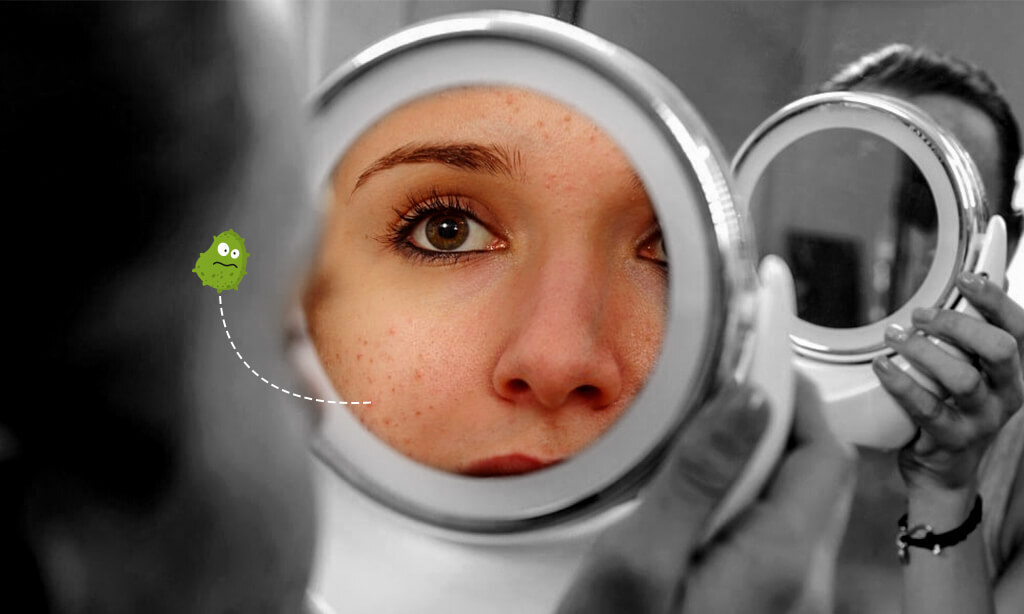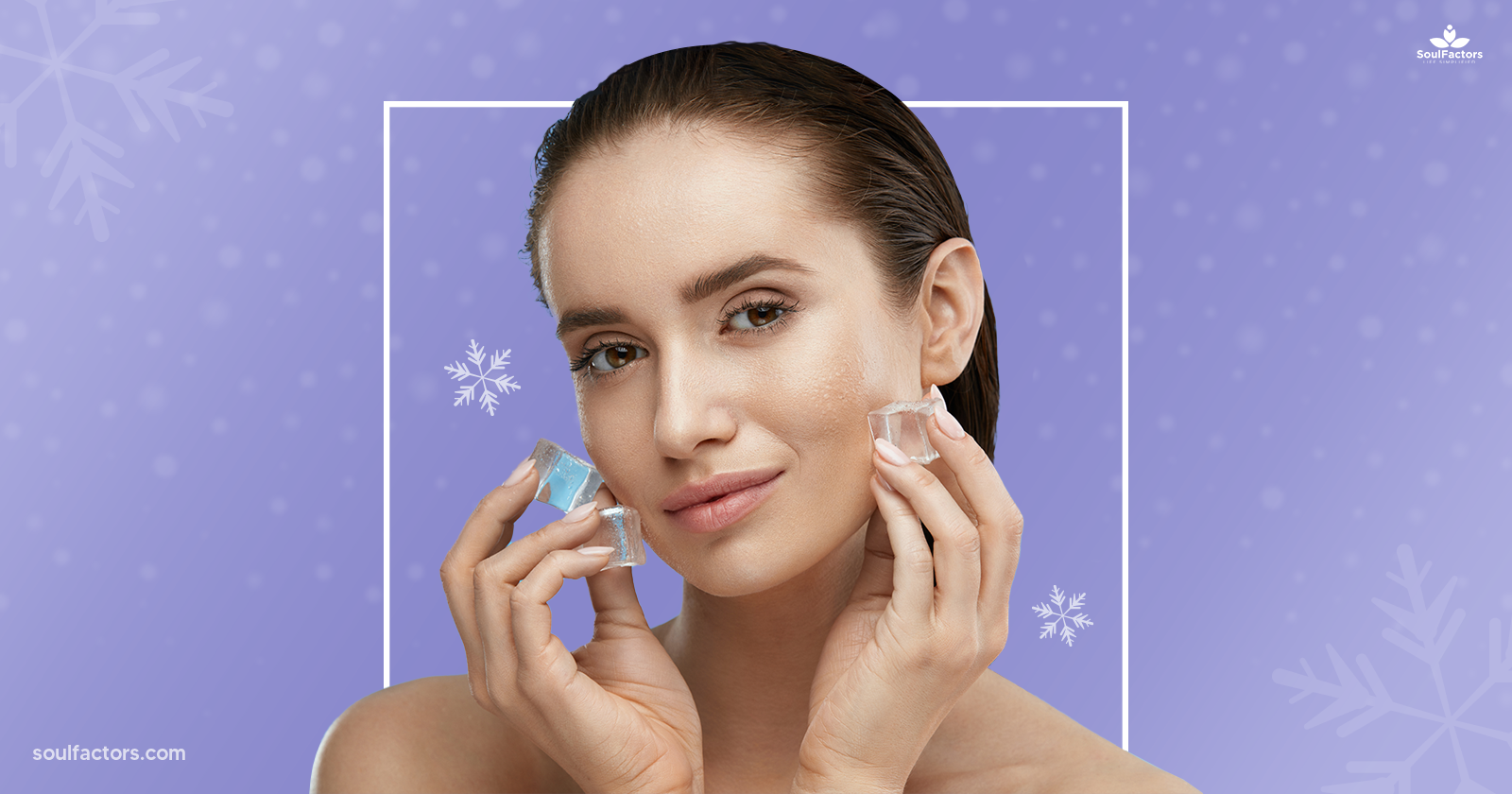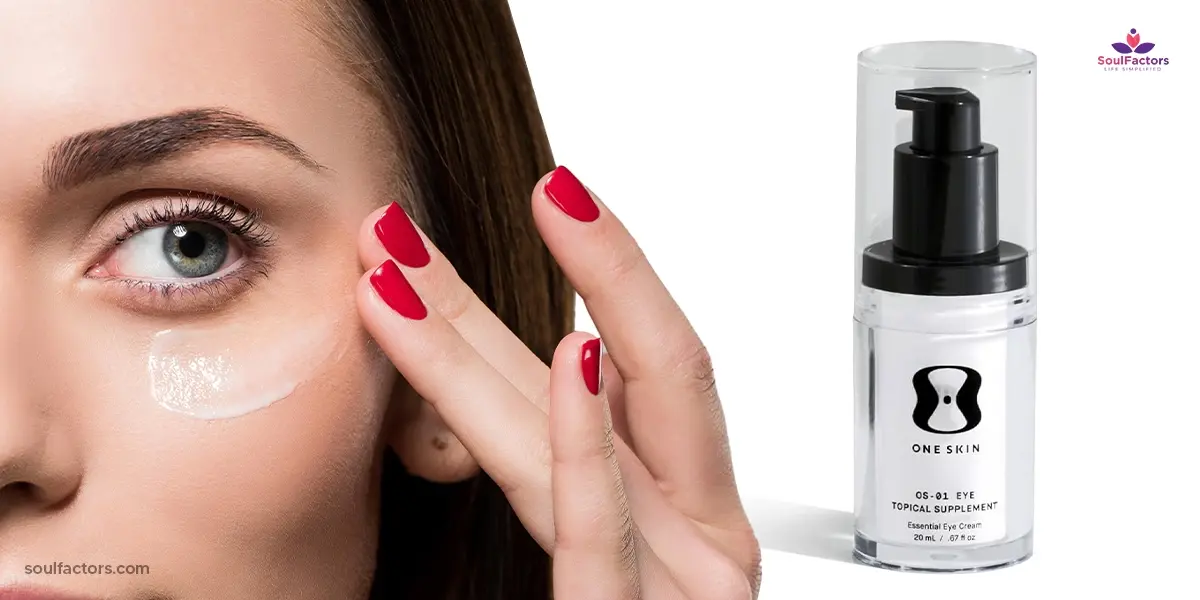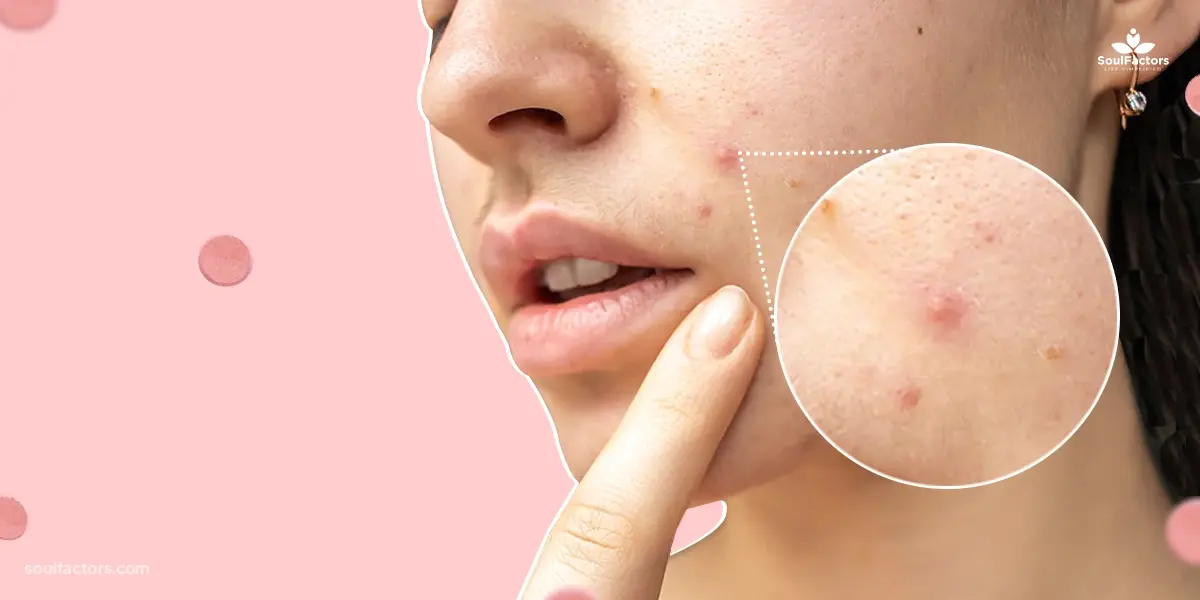Fungal Acne Is Tricky To Diagnose, And You Might Have It!
Goes without saying that acne is a pain in the neck. Now, getting it misdiagnosed is that last thing you need. Not if you know its causes and symptoms.
On Mar 29, 2023 – 11 minutes read

Few people can spot the teeny yet significant difference between bacterial or hormonal acne and fungal acne. No blaming there, since telling them apart can be tricky. In fact, it can be deceptive since fungal acne is more often misdiagnosed as bacterial acne.
Even if they look similar, a close inspection will tell you that fungal acne is an imposter that you may easily mistake for regular acne. Generally, we are highly alerted to pull all the products from under the bed and put them on the skin at the first sign of a zit. Therefore, if you cannot distinguish between the two, you may end up using traditional acne-fighting products on fungal acne and expect results — which you won’t get. Instead, you would be making it worse.
The Misnomer ‘Fungal Acne’ Is Not Uncommon
As adults, we know that acne is more complex than we previously thought. For one thing, there is a list of different acne outlined in different parts of our body. If you can tell one type of acne from the other, you are on the side of luck. Because you can save your skin from misdiagnosis and wrong treatments.

One such commonly misdiagnosed acne is fungal acne or yeast acne. And most people cannot distinguish fungal acne from regular acne. As they are two different conditions caused by two different things, they won’t respond to the same treatment. Now, you know the importance of knowing the difference. So, what exactly is fungal acne?
What Is Fungal Acne?
Technically speaking, more like in dermatology language, it is referred to as Malassezia folliculitis(1) or pityrosporum folliculitis. It is a type of infection in your skin’s hair follicles which is usually papular acne and not associated with blackheads and whiteheads. It is caused by the overgrowth of a fungus we call yeast that inflames the hair follicles on your skin and causes small bumps.

For the record, it is normal for the yeast to live on your skin. But fungal acne occurs when the yeast grows too much or becomes imbalanced in some way. Though it appears as small pimples, it can cause skin irritation and itching. In contrast to regular acne, fungal acne is uniform in shape and size with clusters of small whiteheads. So, if you misdiagnose it easily, how can you differentiate it from other types?
What Are the Symptoms of Fungal Acne?
If you want to know what makes fungal acne different from regular acne, here are the symptoms of fungal acne:
- We know that regular acne can cause whiteheads and pimples of varying sizes, however, fungal acne tends to be almost the same size as small bumps.
- Another factor is how they appear. While bacterial acne is more sparse, fungal acne appears in clusters and crops.
- Another symptom is the place it appears. It appears as breakouts and inflamed acne bumps filled with pus on areas where you typically have a lot of oil, such as the T-zone (rarely the face — which is more common for regular acne), chest, upper arms, and back.

- Besides the place, form, and size, what sets fungal acne apart is its itchiness. Because bacterial acne rarely causes itching, and is more on the sore side.
- One scary sign of fungal acne is that it is contagious(2). So you might want to stay clear of people with fungal acne or avoid close contact with them.
What Are The Causes Of Fungal Acne?
Yes, yeast is found in everyone’s skin and fungal acne is not too uncommon either. The bad news is that it is more prevalent among adolescents due to the increase in the production of sebum in the sebaceous glands during puberty. There are several conditions and causes that can upset the natural balance of fungi and they are:
Antibiotics
Your body can typically balance the yeast, bacteria, and other fungi in your skin. When something happens to eradicate the bacteria, there won’t be anything to keep the fungus in check. Meaning, when there is any sort of imbalance in that natural balancing, an overgrowth will occur as the fungi on the skin proliferate. As a result, you get acne.
In this way, when you take antibiotics, you are eradicating the bacteria resulting in wiping out the natural skin flora. The yeast will thus flourish and fungal acne will occur. Even the long-term use of topical antibiotics or oral antibiotics can make it worse.
Sweat
You already know that it’s best to shower as soon as your workout session is over. Because it is not ideal to sit in sweaty workout clothes for too long. Neither is re-wearing fitness wear without washing them since your skin will be exposed to fungi that have grown in the clothes. So, what is ideal to do is choose loose clothing with natural fabrics without trapping moisture or sweat.
Wearing tight clothes will not only trap moisture but also contribute to breakouts and encourage an overgrowth of yeast. When you wear tight clothes, especially non-breathable clothes, you are encouraging excessive sweating and trapping moisture. This will foster a hospitable environment for the fungi to grow.
Heat And Humidity
Fungal acne is intently related to hotter climates. As the yeast that causes fungal acne thrives in moist environments with excessive heat and sweat, it is seen at much higher rates in places with warm weather. For instance, 56 percent of people with acne in the Philippines have acne at a much higher rate.
Hygiene
Lack of basic hygiene practices like showering and wearing clothes without washing, leaving sweaty garments on your body for too long can contribute highly to the overgrowth of fungi.

Fungal Acne From Skincare Products
If your skincare or makeup products contain oil, even small amounts can trigger the overgrowth of yeast. Because yeast feeds on oil so dearly.
Chronic Conditions
People with chronic conditions that affect their immune systems, like diabetics and HIV, can be predisposed to fungal acne. Moreover, people with compromised immune systems are more likely to develop fungal acne.
Contact With Others
As mentioned above, if you have any close bodily contact with a person with fungal acne, chances of you getting the same are high. It may be your cause.
Fungal Acne From COVID Masks
If you’re still wearing your mask in 2023, the lower parts of your face and around the mouth are more prone to fungal acne. That’s right, your COVID face mask can cause yeast to grow.

Surgical masks, specifically made for single use, are made of polypropylene. Since it is a type of plastic that can trap humidity and heat under the mask, the chances of bacteria and fungi to breed there is over the roof.
Diet
A shift in your diet is not an initial cause of a fungal acne breakout. However, you know how important it is to take note of what goes inside your body. Also, if there is an existing imbalance, your diet can be a contributing factor.
Especially if your diet is high in sugar since yeast’s favorite food is sugar! Considering both fungi and yeast feed on carbohydrates as well, it can help fungal growth.
How Can You Prevent And Treat Fungal Acne?
Prevention is always better than cure. In the case of fungal acne, it is even more important to prevent it from causing it than trying to treat it after the event. Because it may take even years to completely get rid of yeast acne without traces. But chances of getting rid of it completely is nearly impossible. Because it can recur with the change of seasons and lifestyle habits.
More importantly, if you do not get the right treatment, it may last for years. In that case, you might as well address the question of how to treat fungal acne. While you cannot prevent it completely but treat it, you can reduce the chances of a return infection through different treatments:
Shower After Sweating
It is extremely important to take a shower after a sweaty workout session. At least a quick rinse can prevent yeast growth. It doesn’t necessarily have to be a workout session either. Whenever you sweat excessively — even if it is a job that causes you to sweat, take a refreshing shower immediately after you get back home.

This will wash away the excess yeast that may have started growing. If you don’t, you are leaving your wet skin for yeast to breed on.
Eat A Balanced Diet
Since fungi flourish with sugary carbohydrates, you need to balance your diet with fruits, vegetables, and proteins. You can discourage overgrowth with a balanced diet. Go low-carb and starve the yeasts!
Balance Your Gut Microbiome
You need to learn how to fix your gut. Because the microbiome in your gut balances the microbiome in the rest of your body. Especially your skin. When you keep your gut in balance, the organisms beneficial to your body will stay healthy.
Wear Breathable Clothes to prevent Fungal Acne
When you wear tight or non-wearable clothes, your skin will trap moisture and the friction and low airflow causes overgrowth. Not to mention, synthetic materials can contribute to oil production on your back and chest. But if you use breathable fabrics, it will allow airflow, which in turn discourages fungus growth.
Because you can cut down on moist and warm habitat by allowing airflow. It will also help your skin get proper circulation and balanced bacterial growth.
Keep Your Hair Away from the Skin While Shampooing
As shampoos and conditioners include particles that can cause fungal acne, make sure to keep your hair away from your skin. When using a shampoo or conditioner, bring your hair over your shoulder in order to keep it away from your back.

Use A Chemical Exfoliant
Exfoliation is essential to keep your pores clear of dead skin cells. When you use exfoliants with chemicals such as lactic acid, salicylic acid, or bakuchiol, you can keep your pores clean without trapping oil. This way you can prevent creating a breeding table for fungi and yeasts.
Switch Skincare Products For Fungal Acne
Two ingredients that are naturally antibacterial and antimicrobial are tea tree oil and witch hazel. If you switch your skincare regime to products that include the said ingredients, it can help inhibit the growth of underlying yeast.
Use Oil-free Moisturizer
You do realize that skin with fungal acne must be moisturized all the time, right? Especially when you are using medicated products that may cause dryness, or worse, itchiness. So, it is essential to moisturize your skin with an acne-safe moisturizer that is oil-free.
Use A Dandruff Shampoo As Body Wash
Wash your body with a dandruff shampoo as a body wash may help you maintain a healthy balance of yeast on your skin. Because many dandruff shampoos contain selenium which treats fungal acne. If you already have a yeast acne breakout, you can use this to the affected areas as a treatment and leave it on for five minutes before showering. But you clear the breakout, you can use it once a week or so to prevent a second-round infection.

There are over-the-counter topical treatments(3) such as dandruff shampoo or body or face wash and antifungal acne creams. One such impressively effective dandruff shampoo is Nizoral anti-dandruff shampoo. It is a brand name for an antifungal medication called ketoconazole which can lower the levels of fungus on the skin. It has antifungal ingredients that can treat fungal infections, reduce the overgrowth of fungus, and prevent fungal acne.
Regardless of skin type, anyone with stubborn fungal acne can use it every day or every other day for two to three weeks. However, one must consider the potential risk of side effects by using Nizoral. Like any medication, a common side effect of Nizoral is the itching or development of a rash. Additionally, some users have complained of dizziness, nausea, stomach ache, and headaches.
Another nontraditional fungal acne cream is an athlete’s foot cream called Lotrimin AF antifungal cream(4). Since an athlete’s foot is caused by a similar fungus that causes fungal acne, it can treat fungal acne as well. Clotrimazole, which is sold under the brand name Lotrimin AF, is an outstanding treatment for acne caused by fungus. Other ways to treat fungal acne are the following:
Use Antifungal Acne Cream
Does antifungal cream help acne? Yes. The best antifungal acne cream on the face is any cream with salicylic acid (BHA) or benzoyl peroxide. While benzoyl peroxide is the best ingredient to combat yeast acne, salicylic acid has antifungal, antibacterial, and anti-inflammatory properties.
Also, it is an oil-soluble hydroxy acid, hence, it can dissolve all the fungi accumulated inside the clogged pores. As the skin on the body is thicker, you can use fungal acne creams with both benzoyl 5% and tea tree oil.
Take Advantage Of Natural Antifungals
Clove, black walnut, oregano, and other plants are a few natural antifungals you can take advantage of. You can find them as capsules or in essential oil form. But consult an expert before using essential oils on your skin.
Use Tea Tree Oil For Fungal Acne
Melaleuca alternifolia (tea tree oil) has proved to have strong antifungal properties. Particularly against Malassezia, which is the main malefactor of yeast acne. To penetrate the clogged pores even further, you must combine tea tree oil either salicylic acid or benzoyl peroxide. Or you can dilute it with water and apply it only to the acne.
Apply Honey On The Acne
As honey has antimicrobial qualities, you can apply it to the affected area and keep it on for as long as you can. This is an effective treatment for fungal acne.
When you are shopping for products to treat fungal acne, choose products that will not make your acne worse. Always keep in mind to choose zinc, petrolatum, salicylic or glycolic acid, selenium sulfide, or ketoconazole. Because zinc pyrithione has antimicrobial properties that will help to stop the growth of acne-causing fungus and bacteria.

To sum up, the question of how to mitigate fungal acne can only depend on the severity of your breakout. That is to say, only by visiting a dermatologist or your GP can determine the severity. They may prescribe antifungal medication such as ciclopirox and ketoconazole. You can apply these topically to treat fungal acne. In other words, it is imperative to visit a dermatologist if you suspect fungal acne.
Disclaimer: This article is solely for educational purposes. If you have fungal acne, please do not hesitate to consult a dermatologist. Particularly if you plan to use any of the aforementioned medications.

Subscribe to Newsletter
Elevate your routine, stay on trend, and embrace a personalized beauty journey with our curated insights.





Write a Comment